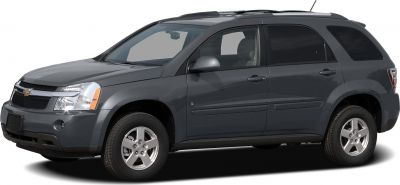 2003 Great Wall Pegasus Dimensions, Size & Specs
2003 Great Wall Pegasus Dimensions, Size & Specs
Measurements of the 2003 Great Wall Pegasus, engineered for optimal performance and comfort
| Dimensions | |
|---|---|
| Length: | 4820 mm189.8 in15.8 ft |
| Width: | 1870 mm73.6 in6.1 ft |
| Height: | 1700 mm66.9 in5.6 ft |
| Weight Specifications | |
| Curb Weight: | 1625-1710 kg3583-3770 lbs |
| Maximal permitted Weight: | 1950-2035 kg4299-4486 lbs |
| Tire Specifications | |
| Rims Size: |
|
| Tire Size: |
|
The Great Wall Pegasus, produced from 2003 to 2008, is a mid-size SUV designed for versatility and durability. Measuring 4820 mm (189.8 inches) in length and 1870 mm (73.6 inches) in width, this SUV offers a spacious exterior footprint suitable for families and off-road enthusiasts alike. Its height stands at 1700 mm (66.9 inches), balancing ample interior headroom with a stable driving experience. The curb weight of the Pegasus ranges between 1625 and 1710 kg (3583 to 3770 lbs), reflecting its solid construction while maintaining maneuverability in urban and rugged environments. The maximum weight the vehicle can carry spans from 1950 to 2035 kg (4299 to 4488 lbs), indicating its capacity for passengers and cargo combined. Equipped with 15-inch rims paired with 235/75 R15 tires, the Pegasus SUV ensures a reliable grip and a comfortable ride across varied terrains. This combination of dimensions and weight class positions the Great Wall Pegasus as a practical choice for those seeking a robust SUV with balanced size, performance, and load capacity during the early 2000s.
Discover the standout features that make the 2003 Great Wall Pegasus a leader in its class
Have a question? Please check our knowledgebase first.
The Great Wall Pegasus SUV produced between 2003 and 2008 measures 4820 mm (189.8 inches) in length, 1870 mm (73.6 inches) in width, and 1700 mm (66.9 inches) in height. These dimensions give it a substantial road presence characteristic of midsize SUVs designed for comfort and utility. Such size enables the Pegasus to offer spacious interior accommodation while maintaining maneuverability suitable for urban and off-road driving.
The Great Wall Pegasus has a curb weight ranging from 1625 kg to 1710 kg (approximately 3584 to 3769 lbs). Its maximum allowable weight varies between 1950 kg and 2035 kg (about 4300 to 4485 lbs). This weight range reflects a sturdy midsize SUV, capable of carrying a good payload including passengers and cargo, while maintaining stability and traction. The relatively high maximum weight suggests the vehicle was built with robustness in mind, suiting various driving conditions and practical uses such as family transport or light hauling.
A standard home garage in many countries typically measures around 2400 mm (7 feet 10 inches) in width and 4800 mm (15 feet 9 inches) in length. The Great Wall Pegasus, with a width of 1870 mm (73.6 inches) and length of 4820 mm (189.8 inches), fits comfortably in terms of width but is just slightly longer than some standard garages by about 20 mm (0.8 inches). This means most standard garages can accommodate the vehicle, though very tight garages may require careful parking. Height at 1700 mm (66.9 inches) is generally not an issue for garages.
The Pegasus's width of 1870 mm (73.6 inches) and height of 1700 mm (66.9 inches) are quite typical for midsize SUVs produced in the early to mid-2000s. For example, many SUVs like the Toyota RAV4 or Nissan X-Trail from that period had similar dimensions, emphasizing a balance between cabin space and road handling. The width facilitates comfortable seating for five passengers, while the height contributes to good ground clearance and visibility, both important for the SUV utility and off-road capability.
The Great Wall Pegasus is equipped with 15-inch rims paired with 235/75 R15 tires. These tires are relatively tall and wide, providing good ground clearance and traction—key features for an SUV intended for mixed on-road and off-road use. The 235 mm (9.25 inches) width offers a stable grip on various surfaces, while the 75 aspect ratio (sidewall height 75% of tire width) ensures a comfortable ride and enhanced ability to absorb bumps, reducing road harshness.
The Great Wall Pegasus debuted as a new model in 2003, directly succeeding earlier SUVs by Great Wall Motors but marked a distinct new generation rather than a simple facelift or update. Therefore, direct dimension comparison with a predecessor is limited. However, the Pegasus was designed with an emphasis on larger size and improved interior space, reflected in its 4820 mm length and 1870 mm width, likely offering more room and presence than earlier smaller SUVs from Great Wall.
Compared to contemporaries like the Toyota RAV4, Mitsubishi Outlander, and Nissan X-Trail, the Great Wall Pegasus is on the larger side lengthwise at 4820 mm (189.8 inches) which tends to favor more interior space. Width at 1870 mm (73.6 inches) is comparable, providing similar shoulder room to these competitors. Height is average for midsize SUVs at 1700 mm (66.9 inches). Overall, the Pegasus offers a competitive size profile that aligns well with midsize SUV standards of the 2000s, potentially offering a bit more length for passenger and cargo comfort.
The Great Wall Pegasus, being a midsize SUV, typically offers seating for five passengers with two rows of seats. Its substantial exterior dimensions ensure a relatively spacious cabin that can comfortably accommodate adults in both the front and rear rows. Interior layout is usually straightforward, focusing on practicality and comfort, and the vehicle's size suggests sufficient headroom and legroom for average to tall occupants, making it suitable for families or groups.
While specific cargo volume figures vary, the Great Wall Pegasus's length and width provide a good foundation for generous cargo space in the rear compartment, typical of midsize SUVs in the early 2000s. Folding rear seats likely enhance load flexibility, allowing for transport of larger items when needed. The relatively high maximum weight capacity (up to 2035 kg / 4485 lbs) also indicates the vehicle can handle substantial cargo without compromising drivability, beneficial for users requiring versatile space.
With a curb weight between 1625 kg and 1710 kg (3584 - 3769 lbs), the Great Wall Pegasus strikes a balance common among midsize SUVs of the early 2000s. This weight supports stability on highways and solid off-road capability but does require adequate engine power for responsive acceleration. The vehicle's dimensions contribute to a center of gravity that is manageable for an SUV, facilitating reasonably stable cornering and ride comfort. The 15-inch wheels combined with relatively wide tires aid in handling and grip, enhancing safety across different driving conditions.
Discover similar sized cars.

| Production: | 2018-2022 |
|---|---|
| Model Year: | 2018 |
| Length: | 4873 mm191.9 in |
| Width: | 1892 mm74.5 in |
| Height: | 1738 mm68.4 in |

| Production: | 2023-present |
|---|---|
| Model Year: | 2023 |
| Length: | 4830 mm190.2 in |
| Width: | 1900 mm74.8 in |
| Height: | 1764 mm69.4 in |

| Production: | 2015-2018 |
|---|---|
| Model Year: | 2015 |
| Length: | 4815 mm189.6 in |
| Width: | 1855 mm73.0 in |
| Height: | 1720 mm67.7 in |

| Production: | 2005-2009 |
|---|---|
| Model Year: | 2005 |
| Length: | 4795 mm188.8 in |
| Width: | 1835 mm72.2 in |
| Height: | 1705 mm67.1 in |

| Production: | 2019-2022 |
|---|---|
| Model Year: | 2019 |
| Length: | 4802 mm189.1 in |
| Width: | 1839 mm72.4 in |
| Height: | 1710 mm67.3 in |

| Production: | 2011-2016 |
|---|---|
| Model Year: | 2011 |
| Length: | 4810 mm189.4 in |
| Width: | 1855 mm73.0 in |
| Height: | 1680-1725 mm66.1-67.9 in |
